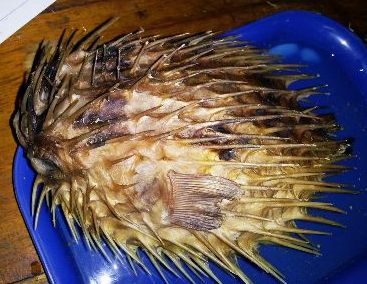The Fish with Three Lines of Defense
Ephesians 6:11
“Put on the whole armour of God, that ye may be able to stand against the wiles of the devil.”
To hear evolutionists tell it, millions of years of chance mutations, combined with natural selection, produced all manner of living creatures. Now, let’s look at just one creature – the porcupinefish – and see how the theory of evolution works out in real life. If the theory fails the test, it’s a strong indicator that the theory lacks the power to explain the existence of any living creature.
 The porcupinefish is blessed with not one, not two, but three lines of defense. The first comes into play when a predator is near. The porcupinefish quickly swallows a large amount of water, practically doubling its size. This makes the fish too large for some predators to swallow.
The porcupinefish is blessed with not one, not two, but three lines of defense. The first comes into play when a predator is near. The porcupinefish quickly swallows a large amount of water, practically doubling its size. This makes the fish too large for some predators to swallow.
The second line of defense comes into play as the fish transforms itself into a football-sized balloon covered with menacing barbs. Its scales stand on end, turning it into an aquatic version of the land-dwelling porcupine. The very sight of these sharp scales protruding in every direction scares off many predators.
The third line of defense for some porcupinefish species is the neurotoxin in their internal organs – a toxin that’s at least twelve-hundred times more potent than cyanide. As Wikipedia points out, “As a result of these three defenses, porcupinefish have few predators.”
Now, can evolutionists explain how this unique fish came to have these three lines of defense? No, they can’t. Not even Darwin tried to explain it when he wrote about the porcupinefish in his book The Voyage of the Beagle.
Prayer: Heavenly Father, thank You for not leaving me defenseless but for giving me everything I need to stand against the wiles of the devil. In Jesus’ Name. Amen.
Author: Steven J. Schwartz
Ref: 1000 Wonders of Nature, p. 120 (Reader’s Digest, London). Wikipedia: https://en.wikipedia.org/wiki/Porcupinefish. Photo: Preserved porcupinefish at the zoology lab of Open University of Sri Lanka. Courtesy of Gihan Jayaweera. (CC BY-SA 3.0)
© 2016 Creation Moments. All rights reserved.